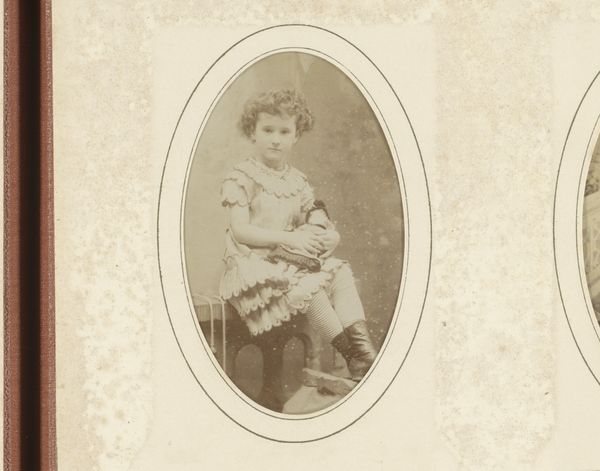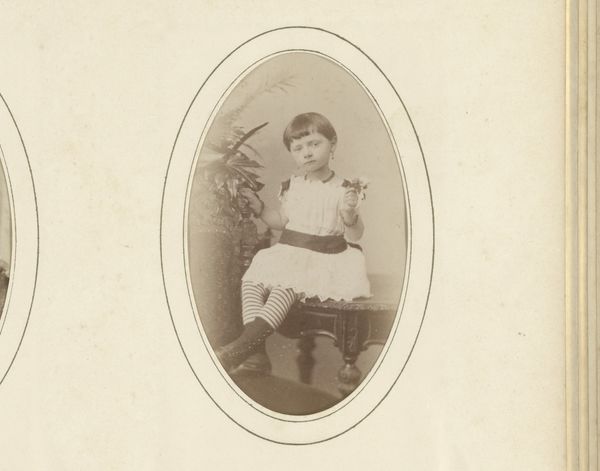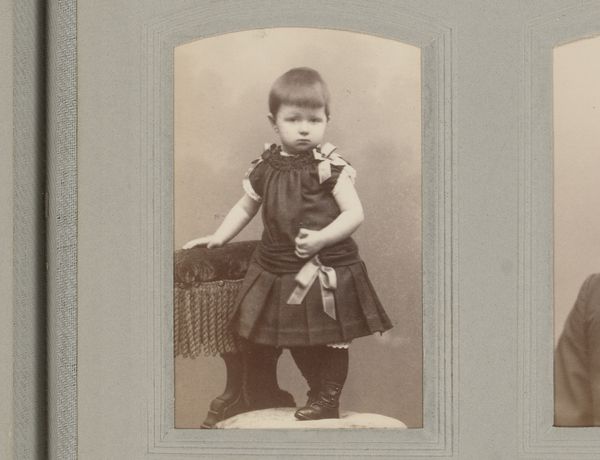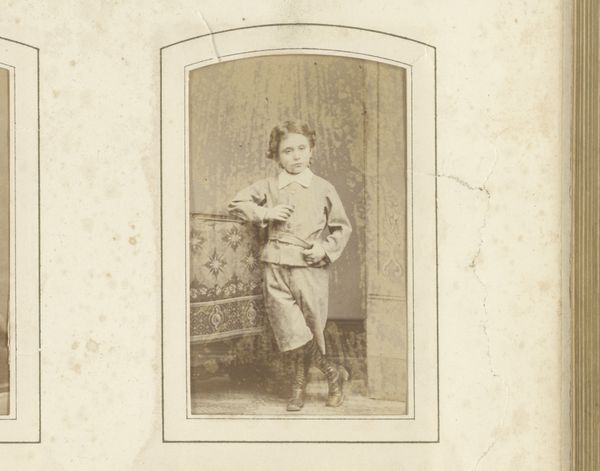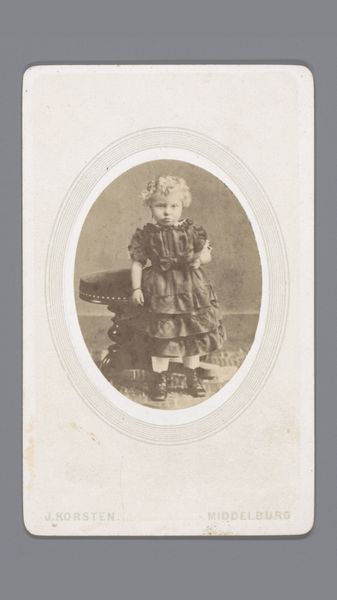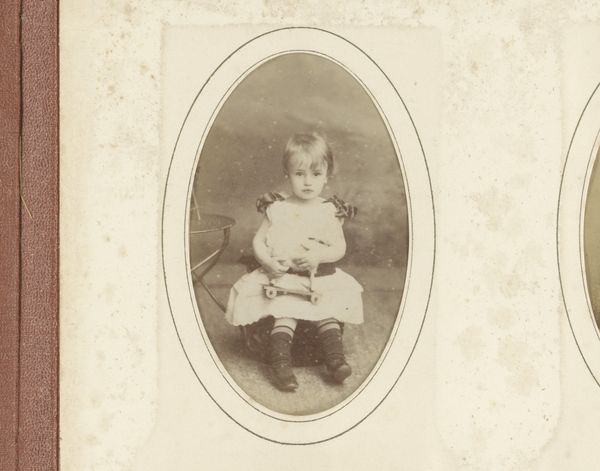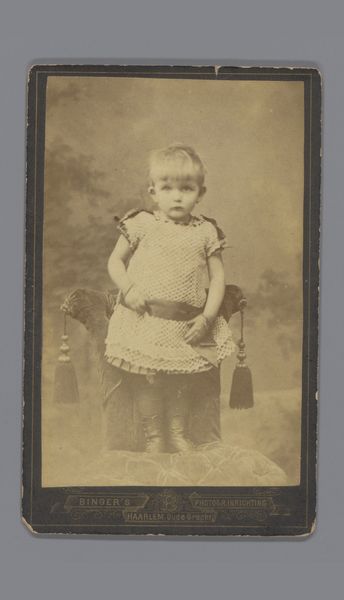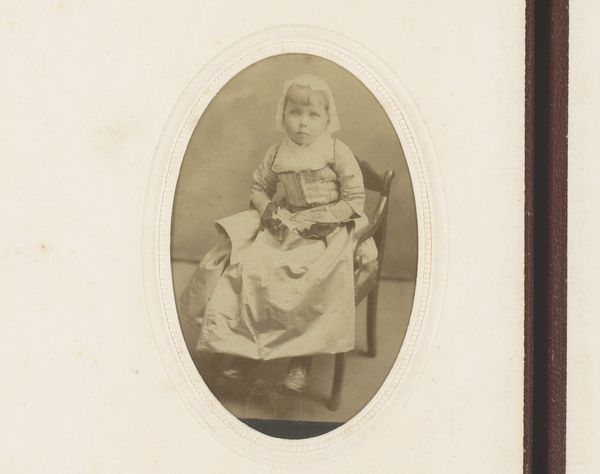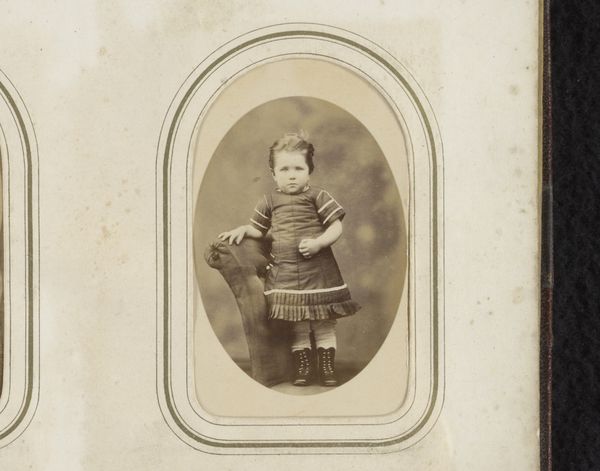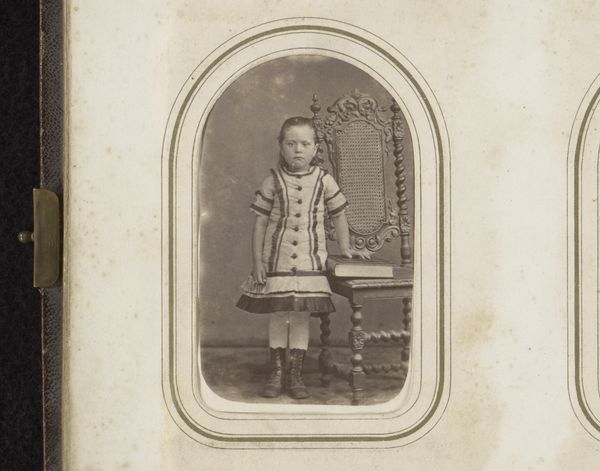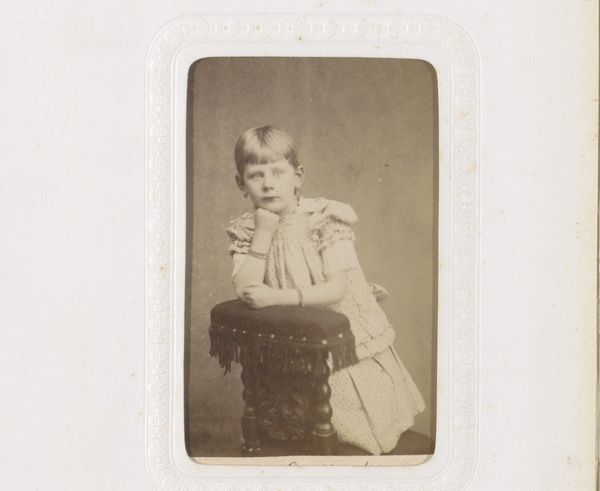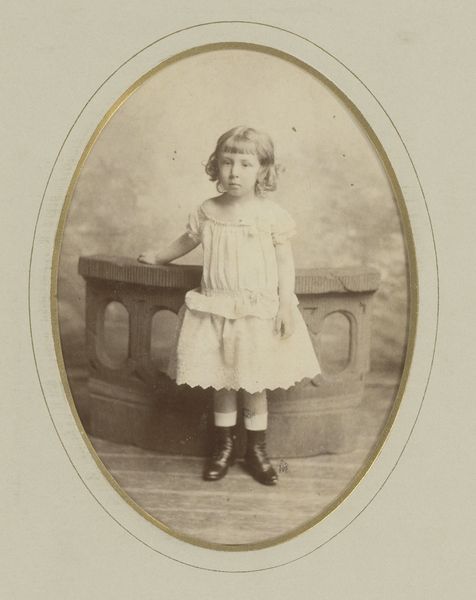
photography
#
portrait
#
photography
#
realism
Dimensions: height 85 mm, width 52 mm
Copyright: Rijks Museum: Open Domain
Curator: This captivating piece is titled "Portret van een meisje, staand op een stoel," or "Portrait of a Girl, Standing on a Chair," by Christian Theodor Kirch. It’s a photograph, likely taken between 1875 and 1881, rendered in that signature sepia tone that whispers of the past. Editor: First thought? Resolute! This girl's got an iron will. Something about her gaze... it pierces. And she's perched on that chair like she's already ruling the world, or about to give us all what-for. Curator: It’s quite typical of realism photography of the era, aspiring to capture an unvarnished truth. What interests me is the way children were often presented. Here, the formality – her posture, her dress – it speaks to a very specific cultural moment where childhood was idealized yet meticulously controlled. Editor: The oval frame almost feels like she’s sealed away in a time capsule, doesn’t it? Her hand clutching the chair back. I wonder what her day looked like before this very controlled snapshot was taken. Curator: Those boots! Such practicality contrasts sharply with the lacy dress. This visual paradox reflects the social dynamics of the time, where practicality met aspiration. Editor: Do you think the seat's deliberate? She stands to look more grown up; taller. There's some storytelling going on here through carefully calculated poses and props. And yet there's something so incredibly vulnerable still. Like a queen caught off-guard. Curator: Exactly. Think of the enduring visual symbols: childhood innocence, the aspirational bourgeois identity… They all converge in this one little portrait. And these symbols persist throughout history, reappearing, shifting their meaning in relation to each new present. Editor: This photograph is haunting; beautiful in its stark portrayal. In art, as in dreams, the image stays in your head long after the experience of first witnessing. Curator: Indeed. Art serves to engage the observer and evoke emotions or new questions with enduring fascination.
Comments
No comments
Be the first to comment and join the conversation on the ultimate creative platform.
